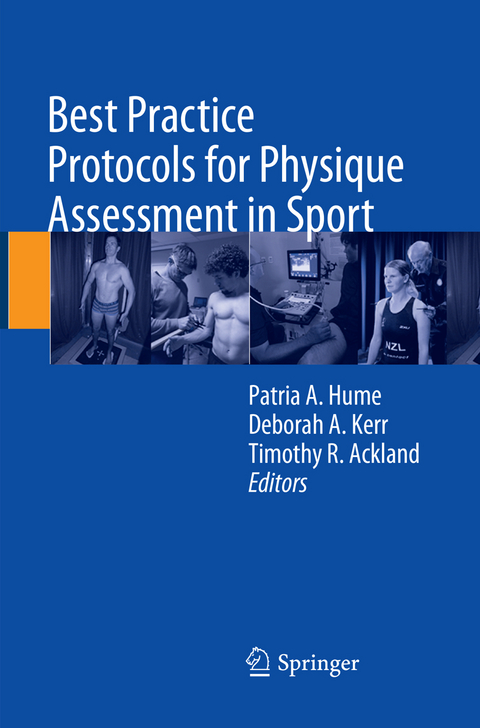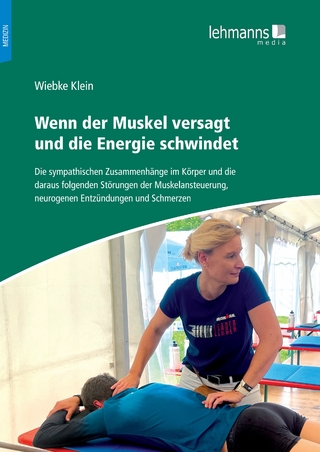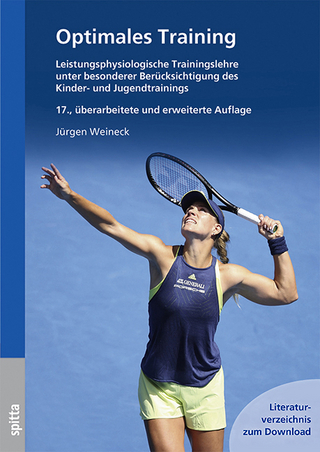
Best Practice Protocols for Physique Assessment in Sport
Springer Verlag, Singapore
978-981-13-5393-2 (ISBN)
Patria Hume is Professor of Human Performance at the Faculty of Health and Environmental Sciences, Auckland University of Technology, New Zealand. Patria has a PhD in sports injury biomechanics, and an MSc(Hons) and BSc in exercise physiology and sports psychology. Patria was the inaugural Director of the Sports Performance Research Institute New Zealand (SPRINZ) from 2000-2009 and is Director of the SPRINZ J.E. Lindsay Carter Kinanthropometry Clinic and Archive. Patria was the Associate Dean Research for the Faculty of Health and Environmental Sciences (2013-2015). Patria’s research focuses on improving sport performance using sports biomechanics and sports anthropometry, and reducing sporting injuries by investigating injury mechanisms, injury prevention methods and using sports epidemiology analyses. In 2000, Patria was a coinvestigator for the Sydney Olympics anthropometry project. Patria served as Director of the International Society for the Advancement of Kinanthropometry (2006-2009) and is an editor of several journals including Sports Medicine. Patria received the 2016 Geoffrey Dyson award from the International Society for Biomechanics in Sports, and the 2016 AUT Research Medal. Patria provides surface anthropometry and ultrasound body composition analysis to athletes, and conducts research using body composition techniques. Associate Professor Deborah Kerr is a research academic with a PhD in exercise and bone health and Master of Science in body composition. Deborah is an Accredited Practising Dietitian and a fellow of Sports Dietitians Australia and an internationally recognised expert in body composition and physique assessment. Deborah is the only Level 4 ISAK accredited anthropometrist in Australia and one of 16 appointed by ISAK world-wide and qualifies her to conduct accre dited training courses in anthropometry. Deborah’s research focuses on improving sport performance using sports nutrition and sports anthropometry and she has been an investigator on several large sports anthropometry projects. In 2000, Deborah was a coinvestigator for the Sydney Olympics anthropometry project. She has published numerous book chapters and journal publications in body composition and physique assessment. Deborah served as Director of the International Society for the Advancement of Kinanthropometry (ISAK) and for Sports Dietitians Australia. Tim Ackland is Professor of Applied Anatomy & Biomechanics, and was Head of the School of Sport Science, Exercise and Health, at The University of Western Australia. He has research interests in the mechanics of human movement with themes spanning exercise rehabilitation, high performance sport and human performance in industry. Prof. Ackland has published over 130 peer-reviewed papers as well as 5 academic books and 30 book chapters. He has served as a Director of Sports Medicine Australia and was a member of the IOC Medical Commission’s working party on Body Composition, Health and Performance. Tim also chaired the Scientific Programme Committee for the 5th IOC World Congress on Sport Sciences for the 2000 Olympics, and was Conference Co-chair for Sports Medicine Australia in Perth, 2001. In 2000, Tim was a principle researcher for the Sydney Olympics anthropometry project. Tim has been an ISAK4 kinanthropometrist.
Part I. Why Measure Physique?.- 1. Physique Assessment In Youth Sports For Talent Identification And Development.- 2. Anthropometry and Health for Sport.- 3. Optimising Physique for Sports Performance.- 4. Physique Assessment for Sports Ergonomics Applications.- Part II. How to use the Selected Method and Report the Data.- 5. Athlete Considerations for Physique Measurement.- 6. Non-Imaging Method: Surface Anthropometry.- 7. Non-Imaging Method: 3D Scanning.- 8. Non-Imaging Method: Air Displacement Plethysmography (Bod Pod).- 9. Non-Imaging Method: Bioelectrical Impedance Analysis.- 10. Non-Imaging Method: Doubly-Labelled Water.- 11. Imaging Method: Ultrasound.- 12. Imaging Method: Computed Tomography And Magnetic Resonance Imaging.- 13. Imaging Method: Dual-Energy X-Ray Absorptiometry.- 14. Imaging Method: Technological and Computing Innovations.- Part III. Application of Physique Assessment in Athletes.- 15. Physique Assessment in Practice.- 16. Recommendations for Conducting Researchon Athletes - Large-Scale-Survey Case Studies.- 17. Physique Characteristics Associated With Athlete Performance.- 18. Body Image for Athletes.- 19. Training and Accreditation Systems and Ethical Considerations.- 20. Resources: YouTube Videos and the Jelckc Website and Archive.
| Erscheinungsdatum | 08.02.2019 |
|---|---|
| Zusatzinfo | 73 Illustrations, color; 11 Illustrations, black and white; XXXIV, 276 p. 84 illus., 73 illus. in color. |
| Verlagsort | Singapore |
| Sprache | englisch |
| Maße | 155 x 235 mm |
| Themenwelt | Sachbuch/Ratgeber ► Sport |
| Medizin / Pharmazie ► Medizinische Fachgebiete ► Sportmedizin | |
| Medizin / Pharmazie ► Studium | |
| Schlagworte | 3-D photometry • Air-displacement plethysmography • Anthropometrist • anthropometry • Athlete • Best Practice • Bioimpedance • BOD-POD • Body composition • Dual-Energy X-ray Absorptiometry • DXA • guidance • Kinanthropometry • Ultrasound |
| ISBN-10 | 981-13-5393-X / 981135393X |
| ISBN-13 | 978-981-13-5393-2 / 9789811353932 |
| Zustand | Neuware |
| Haben Sie eine Frage zum Produkt? |
aus dem Bereich


